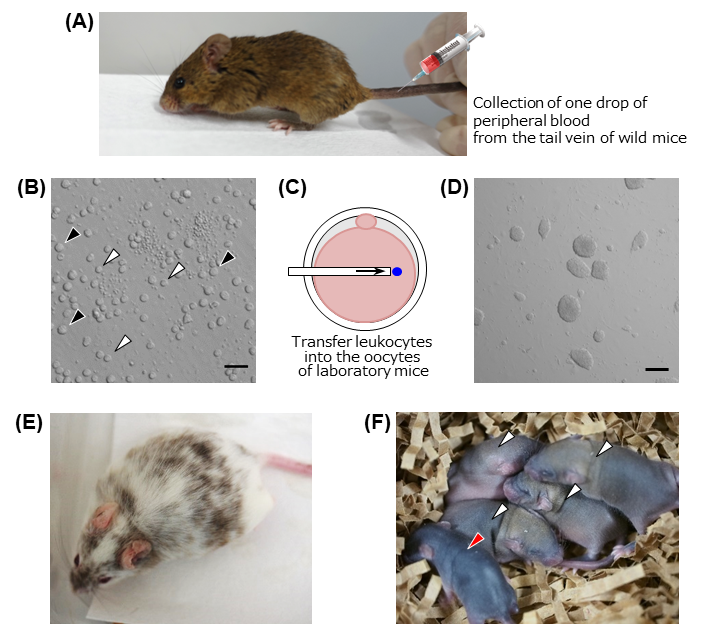 |
BRC Current Technology February 2024 |
19. Establishment of nuclear transferred ES cells
|
| Laboratory mice are the most widely used experimental animals because of their small size, ease of breeding, short gestation period, and the application of assisted reproductive technologies (ART). However, they were bred from a small population derived from a restricted region in Western Europe, which is a disadvantage due to the lack of diversity in their genetic background. On the other hand, wild-derived mice (wild mice), which were collected from all over the world, are used to compensate for the disadvantages of laboratory mice because of their high genetic diversity. However, they have the disadvantage of being difficult to preserve and maintain because some strains are difficult to apply the ART. The establishment of ES cell lines is an effective way to preserve wild mice, but because ES cells require fertilized embryos, it is difficult to establish ES cells in these strains. In this study, we used nuclear transfer techniques to successfully establish ES cells from wild mice. We used wild mice, a subspecies of laboratory mice (Figure A), isolated leukocytes derived from peripheral blood (B: black arrows), and performed nuclear transfer into oocytes of laboratory mice (C) [1]. This allows for minimally invasive cell collection. After transferring the embryos to the culture medium and establishing nuclear transfer (nt) ES cells (D), chimeric mice were produced (E), and the next generation was successfully born (F: white arrow indicates mice derived from ntES cells). This technique has shown that even mouse strains that are difficult to preserve by ART can be efficiently maintained by the use of oocytes from laboratory mice [2]. |
|
| References: | [1] | Kamimura, S. et al. Mouse cloning using a drop of peripheral blood. Biol. Reprod. 89, 24 (2013) |
| [2] | Watanabe, N. et al. Derivation of embryonic stem cells from wild-derived mouse strains by nuclear transfer using peripheral blood cells. Sci. Rep. 13, 11175 (2023). |





